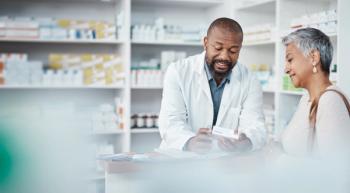
Distress Tolerance in Relation to Antiretroviral Treatment Adherence and Response Among Individuals Infected with HIV
HIV positive patients who become distressed more easily may be less likely to adhere to antiretroviral treatment (ART), suggest the results of a study appearing in the September 2013 edition of Behavior Therapy.
HIV positive patients who become distressed more easily may be less likely to adhere to antiretroviral treatment (ART), suggest the results of a study appearing in the September 2013 edition of Behavior Therapy.
The ability to tolerate distress can further influence ART adherence when combined with negative emotions and negative medication side effects, the researchers from Brigham & Women’s Hospital, Stanford University, and the University of Maryland determined.
In addition, a patient’s belief in his or her ability to tolerate negative moods and ability to persevere through distressing tasks correlated to better adherence to ART and a lower viral load.
“Our findings are largely consistent with past work in the areas of ART adherence and distress tolerance, and underscore the clinically relevant role of distress tolerance in models of adherence and disease status among HIV positive patients,” the researchers wrote. “ . . . future interventions for individuals with HIV may benefit from specifically targeting ability/willingness to tolerate distress through cognitive behavioral treatment approaches so that individuals may remain adherent in the face of treatment-related burdens.”
Researchers used measures of ART adherence, responses to ART, immunocompromise status, and measures of distress tolerance to gauge the relationship between distress tolerance and ART adherence. Noting evidence suggesting an association between poor distress tolerance, negative emotions, ART side effects, and nonadherence, researchers also investigated the association between distress and adherence when controlling for negative emotions and therapy side effects.
Researchers collected data from a cross-sectional study of 180 participants with HIV, finding 140 participants who met study inclusion criteria. Pill count tracking was used to measure patient adherence, and viral load and CD4 to determine therapy response.
Researchers used 4 scales to gauge HIV-related symptoms, distress, and positive and negative emotions, including a symptom checklist, measures of positive and negative emotions experienced during the week prior, a distress tolerance scale, and a computerized behavioral measure of distress tolerance.
Pill count data revealed an average adherence rate of 81.4%, which researchers noted was lower than the 95% recommended adherence rate for protease inhibitor ART, although it is still within the acceptable adherence range. Meanwhile, the average side-effect severity fell near the midpoint (31.5) of the 68-point side effect range. Participants reported negative emotions at a slightly higher rate than those seen in HIV-negative adults, whereas self-reported distress tolerance was slightly lower than the results established in a separate study. The behavioral measure of distress tolerance has not yet been used in another HIV-positive participant population; as a result, researchers compared their findings on that test to a sample of substance-abusing participants who also had affective disorders. Researchers noted that participants in their study tended to complete the task for about 67.2 seconds, whereas the sample of substance-abusing participants who also had affective disorders tended to complete the task for approximately 294 seconds.
“In addition to the severity of distress (ie, negative affect and bothersome medication side effects), the degree to which one is able and/or willing to tolerate such distress appears to be further influencing ART medication adherence and viral load status in our sample,” the researchers wrote. “Promoting tolerance of affective distress and distressing tasks associated with the high-adherence demands of ART for HIV management are worthwhile to consider in future research.”
Newsletter
Stay informed on drug updates, treatment guidelines, and pharmacy practice trends—subscribe to Pharmacy Times for weekly clinical insights.

















































































































































































































